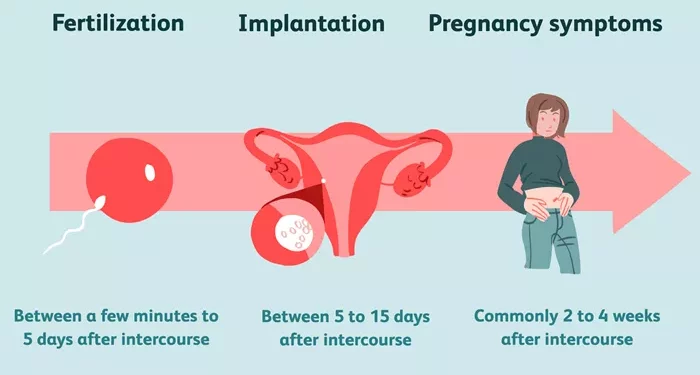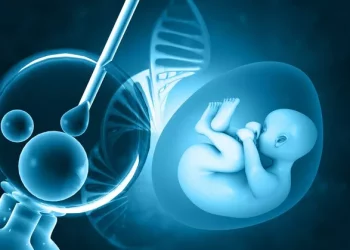Ovulation is a crucial part of the menstrual cycle that plays a significant role in fertility. Understanding when ovulation occurs can help individuals trying to conceive, as well as those wanting to avoid pregnancy. Knowing the timing of ovulation can also provide insights into overall reproductive health. This article delves into the most common ovulation times, factors affecting ovulation, and methods to predict it accurately.
The Importance of Ovulation
What Is Ovulation?
Ovulation is the process by which an ovary releases an egg (ovum) into the fallopian tube. This usually happens midway through the menstrual cycle. The egg is then available for fertilization by sperm. Ovulation is a key component of the menstrual cycle and directly impacts fertility.
Why Knowing Ovulation Time Is Important
For those trying to conceive, knowing the most common ovulation time helps in timing intercourse for the highest chance of pregnancy. For those avoiding pregnancy, understanding ovulation can help in planning contraception. Additionally, recognizing ovulation patterns can assist in diagnosing reproductive health issues.
Understanding the Menstrual Cycle
Phases of the Menstrual Cycle
The menstrual cycle is divided into several phases:
Menstrual Phase: This is the period when bleeding occurs, typically lasting from 3 to 7 days. It marks the beginning of the cycle.
Follicular Phase: This phase starts on the first day of menstruation and continues until ovulation. It involves the development of follicles in the ovaries that prepare to release an egg.
Ovulation Phase: Ovulation occurs when a mature egg is released from the ovary. This phase is typically around the middle of the cycle.
Luteal Phase: After ovulation, the luteal phase begins. During this phase, the body prepares for a possible pregnancy. If fertilization does not occur, the cycle ends with menstruation.
Typical Ovulation Timing
Ovulation typically occurs around the middle of the menstrual cycle. For a standard 28-day cycle, ovulation usually happens between days 12 and 16. However, cycle lengths can vary, which affects the timing of ovulation.
Factors Affecting Ovulation
Cycle Length and Variability
The timing of ovulation can vary based on the length of the menstrual cycle:
Regular Cycles: For women with a regular 28-day cycle, ovulation commonly occurs around day 14. This is based on the assumption that ovulation happens approximately 14 days before the start of the next menstrual period.
Irregular Cycles: For women with irregular cycles, predicting ovulation can be more challenging. Ovulation may occur earlier or later in the cycle.
Age
Age can affect ovulation patterns. Younger women typically have more regular cycles and consistent ovulation. As women age, especially as they approach perimenopause, ovulation can become more irregular.
Health Conditions
Certain health conditions can impact ovulation, such as:
Polycystic Ovary Syndrome (PCOS): This condition can lead to irregular or absent ovulation.
Thyroid Disorders: Both hypothyroidism and hyperthyroidism can disrupt normal ovulation.
Stress and Lifestyle Factors: High stress levels, excessive exercise, and significant weight changes can affect ovulation.
Methods to Predict Ovulation
Calendar Method
The calendar method involves tracking the menstrual cycle on a calendar to estimate ovulation. By noting the length of several cycles, an individual can predict ovulation as occurring about 14 days before the start of the next period. This method can be useful for those with regular cycles.
Basal Body Temperature (BBT) Charting
BBT charting involves taking and recording body temperature each morning before getting out of bed. A slight increase in BBT (typically about 0.5°F) usually indicates that ovulation has occurred. This method requires daily temperature tracking and can help identify ovulation after it has happened.
Ovulation Predictor Kits
Ovulation predictor kits (OPKs) are designed to detect the surge in luteinizing hormone (LH) that occurs shortly before ovulation. These kits are used to test urine and provide a more precise indication of when ovulation is likely to occur.
Cervical Mucus Monitoring
Monitoring changes in cervical mucus can also help predict ovulation. Around ovulation, cervical mucus becomes clearer, stretchier, and more abundant, resembling raw egg whites. This change in mucus consistency helps facilitate sperm movement and indicates peak fertility.
Ultrasound and Blood Tests
For more precise tracking, especially in cases of infertility, doctors may use ultrasound and blood tests. Ultrasound can visualize follicle development and confirm ovulation. Blood tests can measure hormone levels to pinpoint ovulation.
see also: What Are the 3 Main Types of Fertility Treatments: A Simple Guide
Common Ovulation Times Based on Cycle Length
28-Day Cycle
For women with a 28-day cycle, ovulation typically occurs between days 12 and 16. This is the most common timing and aligns with the midpoint of the cycle.
Shorter Cycles
Women with shorter cycles (e.g., 21 days) may ovulate earlier, around days 7 to 11. Shorter cycles shorten the time between the end of menstruation and ovulation.
Longer Cycles
Women with longer cycles (e.g., 35 days) may ovulate later, around days 19 to 23. Longer cycles extend the period between menstruation and ovulation.
Conclusion
Understanding when ovulation typically occurs is essential for both fertility planning and reproductive health. Ovulation usually happens around the middle of the menstrual cycle, with specific timing varying based on cycle length and individual factors. Methods such as calendar tracking, basal body temperature charting, ovulation predictor kits, and cervical mucus monitoring can help predict ovulation more accurately.
For individuals with irregular cycles or specific health concerns, consulting a healthcare provider may provide further guidance and support. Recognizing ovulation patterns can empower individuals to make informed decisions regarding their reproductive health and family planning.
Related topics:



























